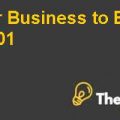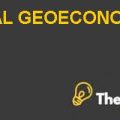Business Analysis
This part of the report presents a business analysis of Tottenham Hotspur Football Club, which was one of the oldest teams in premiership. The club had enjoyed a tremendous success over the past six decades and had become the first publicly-owned football club in England and was also the first to introduce the corporate hospitality boxes at their stadium.In early 2008, the chairman of the club was considering a bold move for the organization and was also considering to increase revenue for the club through the development of new stadium.
The current business model of the club is very impressive. The club generates revenue from four major sources that include: attendance, sponsorship rights, merchandise sales and broadcast rights. Further, the club has created a “One Hotspur Membership” to attract their 70,000 fans, which has been offered at varying level of benefits from insider team updates to occasional ticket packages to full season ticket packages in order to further expand and enhance their brand image.
The investor’s base of the club comprised of ENIC International Ltd., who had acquired a combination of 82% beneficial interest in the club and was the only shareholder with a 3% stake in the club. Further, the management team of the club includes Daniel Levy, partner at ENIC, who had previously served as a director of Scottish football club but had been elected as the chair person of Tottenham Hotspur Plc. in 2001.
The value creation feature of Tottenham Hotspur Plc. was the ranking made according to their win-tie-loose record by the end of 38 game season because the high ranking team would generate higher share of league television broadcast revenues and each move up in the standings worth an estimated £760,000.
The major risk driver faced by the club is the loose of key players because it will threaten the performance of the team and would enable the team to report a lower ranking, which will ultimately result in a loss of broadcasting revenue. Further, if the club loses its key players then the club will be required to sign new players; which will ultimately require high cost to purchase rights of the player and will have to pay his salary on a continuous basis.
M-M theorem is concerned with the capital structure policies of the companies, which determines that in perfect capital market, it does not matter whatever the means of financing has been used to finance the operations of the company. They emphasized that the fair value of the enterprise is determined through earning power and by risk of underlying assets and it does not depend on the way to distribute dividend.
The basic assumptions in M&M theories are that there are no taxes, no bankruptcy cost, no transaction cost and there is an assumption that the WACC remains constant whether or not there is a change in capital structure. As the theory assumes that there are no tax charges so there is no benefit in interest payment, thus there are no changes in WACC. Further, the theory also argues that an increase in debt will not influence the stock of the company; hence, the capital structure is irrelevant to the stock of the company.
The application of M&M theory in Tottenham Hotspur Plc. seems unreasonable because the club is subject to 35% of tax at annual profits, which determines that the capital market of the Tottenham Hotspur Plc. is imperfect and the club is subject to a tax savings because the interest expense is a tax deductible expense in calculating taxable profits. Further, this also requires a determination of the optimal point where the interest expense and tax benefits are balanced, hence, an efficient capital budgeting policy is being adopted.
The unique features of the corporate financial management of the sport club/franchise and a typical company strongly depends on corporate mission and the characteristics of the organization. The corporate financial management of the typical company will generate sufficient profits by investing in worthwhile investments whereas, the financial management of the sports clubs mainly includes the management of resources so as to promote the community as a whole. Further, it also comprises of managing the sentiments of the fans because the sports club have a long lasting fan base from decade.
The main motive of the corporate finance theories was to effectively manage the sources of funds and effective management of the capital structure of the organization so as to increase the value of the shareholders. Tottenham Hotspur Plc. considers to manage its corporate finances through an investment in stadium development. If the club succeeds by investing in stadium then it will increase the fan base from 36,500 fans to 60,000 fans, which will ultimately increase the attendance revenue by 40% and sponsorship revenue by 20% relative ...............
This is just a sample partial case solution. Please place the order on the website to order your own originally done case solution.
Tottenham Hotspur Football Club is a public property of a professional football team based in London, England. Club chairman Daniel Levy, is considering a significant investment in physical assets, including the development of a new stadium, as well as the acquisition of new players. The team must decide if the expected cash flows associated with the addition of the stadium, the player, or both, require significant investment required in these assets, "Hide
by Joshua D Kowal, Lauren H. Cohen, Christopher Malloy Source: HBS Premier Case Collection 12 pages. Publication Date: November 3, 2008. Prod. #: 209059-PDF-ENG













